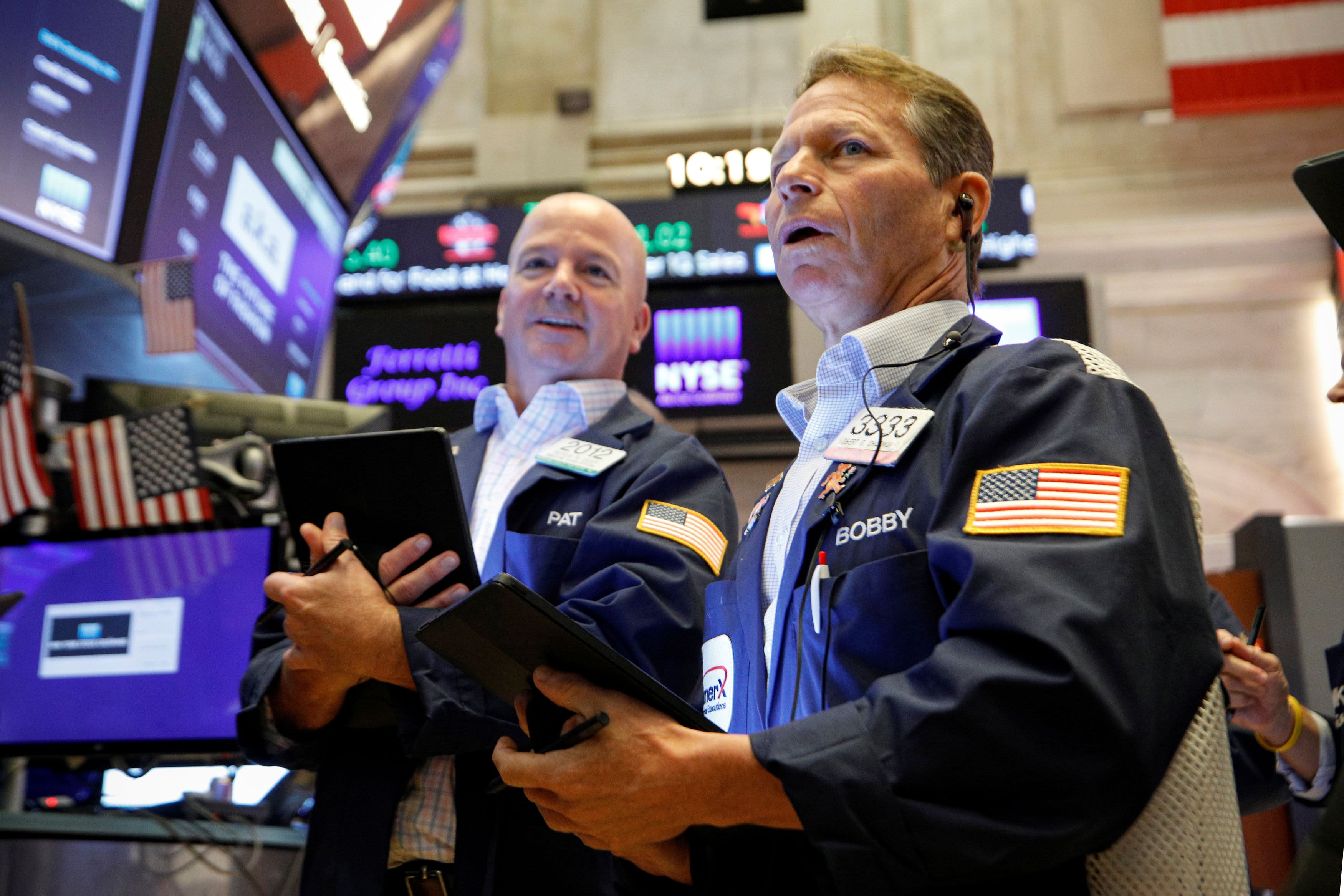Dow jumps 600 points as 2-day comeback rally pushes major indexes into the green for the week

U.S. stocks jumped for a second day as fears around a crisis in China’s property market eased somewhat and as the Federal Reserve kept current monetary stimulus in place for just a little bit longer.
The Dow Jones Industrial Average gained 612 points, or 1.8% with steady buying throughout the trading day. Thursday’s rally adds to 338-point gain in the prior session. The S&P 500 rose 1.6% and the Nasdaq Composite added 1.3%.
Thursday gains pushed the major averages back into the green for the week. The Dow and S&P are up now up 0.8% and 0.7%, respectively, while the Nasdaq inched 0.2% higher.
“Uncertainty had been building around the path of the economy and the Fed instilled some confidence into markets yesterday,” said Charlie Ripley, senior investment strategist for Allianz Investment Management. “In addition, other risks that have been weighing on investor sentiment like the debt ceiling and risks associated to China’s real estate market appear to be fading, which have dialed up investor’s appetite for risk.”
Salesforce led the index with a 6% gain after the cloud company raised its full-year 2022 revenue guidance. Darden Restaurants was among the big S&P movers, jumping more than 6% after reporting strong quarterly earnings.
Stocks linked to a global economic recovery were higher. General Electric shares added about 5%. Las Vegas Sands, which has big China exposure, rose 4%. Caterpillar added 3%.
Energy stocks led the S&P, with APA Corp up 7% and Devon Energy nearing a 7% increase as U.S. West Texas Intermediate (WTI) crude futures rose to $73.50 per barrel, its highest level since Aug. 2. Investors bought industrials stocks too on hopes a potential Evergrade default wouldn’t wreak havoc on global markets outside of China. Dow Inc rose nearly 3% and Schlumberger jumped 7%.
Bank stocks, which are typically viewed as cyclical stocks whose performance is tied to the path of the economy, rose as Treasury yields climbed higher. JPMorgan, Bank of America and Citibank added about 3%. Regional banks, which tend to trade closely along with the 10-year, like Regions and Fifth Third gained more than 4%.
Hong Kong’s Hang Seng index rebounded more than 1% from losses this week with China property developer Evergrande Group rallying more than 17%. On Wednesday, the company eased fears a bit by resolving payment on a local bond.
But global investors are still waiting on whether the company will pay $83 million in interest on a U.S. dollar-denominated bond due Thursday. Government regulators instructed Evergrande to avoid a near-term dollar bond default, Bloomberg News reported, citing a person familiar.
At the same time, Wall Street Journal reported early Thursday that the Chinese government is asking local authorities to prep for a “possible storm” if Evergrande fails. Some of Evergrande’s bondholders did not expect payment Thursday and had not heard from the company, Reuters reported.
Also on Thursday the Labor Department reported that initial jobless claims rose last week as the U.S. labor market continues its recovery from last year’s recession. There were 351,000 claims last week, topping estimates of 320,000. The reading for the week prior came in at 332,000.
Stocks finished higher across the board Wednesday after the Federal Reserve kept benchmark interest rates unchanged, while indicating no immediate intention of removing stimulus policies. The central bank issued a statement following the meeting that said if progress continues “as expected,” then a “moderation in the pace of asset purchases may soon be warranted.” It gave no timeline, however.
The hawkish stance was welcomed by equity markets, which saw it as confirmation of the economy’s strength and continued progress as it recovers from the Covid recession, said Anu Gaggar, global investment strategist at Commonwealth Financial Network.
“While we are far from the end of quantitative easing and near-zero rates, the tide seems to be beginning to change,” he said. “So far, the market had welcomed bad news as good news, but a market reacting to signs of an economy able to stand on its own, without the monetary policy crutches, is a refreshing change.”
The central bank implemented a $120 billion per month bond-buying program last year as the pandemic shuttered the economy. As economic conditions improve more members of the Federal Open Market Committee now see the first rate hike happening in 2022.




